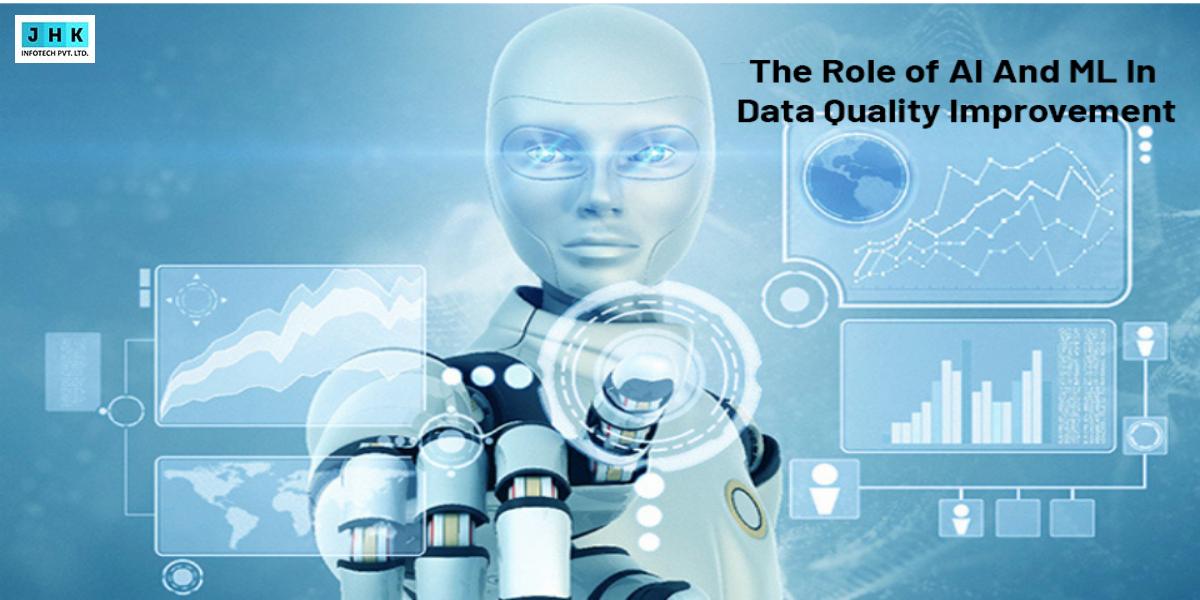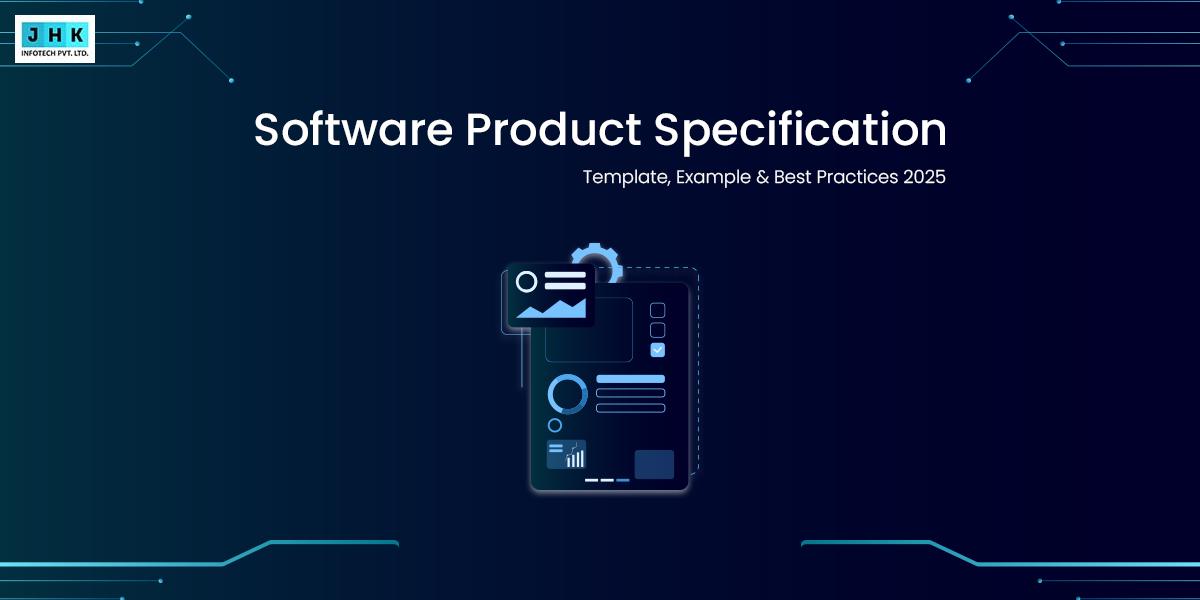The Role of AI And ML In Data Quality Improvement

In an increasingly data-driven world, the quality of data is paramount. Organizations rely on accurate, consistent, and timely data to drive decision-making, innovate, and maintain a competitive edge. Whether it’s customer information, financial records, or operational metrics, the integrity of data plays a crucial role in ensuring successful business outcomes. Poor data quality, on the other hand, can lead to erroneous conclusions, inefficiencies, and costly mistakes. With businesses amassing vast amounts of data daily, maintaining high-quality data has become one of the most significant challenges for data-driven enterprises.
Data quality defines the suitability of data for its intended purpose. It encompasses key characteristics, including precision, coherence, completeness, timeliness, and pertinence. However, as organizations scale and manage increasingly complex datasets, these attributes can degrade rapidly without proper oversight. Ensuring data quality requires ongoing efforts in cleaning, validating, enriching, and monitoring data—tasks that have historically been manual, time-consuming, and prone to error. This is where the integration of Artificial Intelligence (AI) and Machine Learning (ML) comes into play.
What Are AI and ML? A Brief Overview
Clarifying the Concepts of Artificial Intelligence (AI) and Machine Learning (ML)
Artificial Intelligence (AI) refers to the development of machines and systems that can perform tasks typically requiring human intelligence. These tasks include reasoning, problem-solving, understanding language, and learning from experience. Machine Learning (ML), a subset of AI, involves the creation of algorithms that allow systems to learn from and make predictions or decisions based on data, without being explicitly programmed for every possible outcome.
At the heart of ML is the idea that systems can improve automatically over time through experience, learning from vast datasets to uncover patterns and relationships. This self-improving capability makes ML highly effective for handling large-scale, dynamic, and complex data environments.
How AI and ML Differ and Complement Each Other
AI and ML, while often used interchangeably, serve different functions within the realm of data processing. AI is the broader concept, concerned with building intelligent systems that can mimic human-like cognitive functions. In contrast, ML focuses on enabling systems to learn and adapt from data. Essentially, ML is a tool within the AI toolkit.
Together, AI and ML complement each other in driving data quality improvements. While AI enables intelligent systems that can interpret and reason about data, ML enhances these systems by allowing them to learn from past data and continuously refine their models. This combination is powerful when it comes to ensuring data integrity across vast and varied datasets.
The Convergence of AI, ML, and Data Quality
How AI and ML Drive Data Quality Improvement
AI and ML bring transformative capabilities to the task of data quality improvement. By automating repetitive tasks, identifying hidden patterns, and offering advanced analytics, these technologies can vastly improve the accuracy, consistency, and timeliness of data. With AI, data processing becomes smarter and more efficient, while ML algorithms ensure that systems learn from past data and make increasingly accurate predictions
For instance, AI can help automate the cleansing process by flagging or correcting inconsistencies, while ML can identify anomalies or patterns that indicate potential errors or quality issues. Together, they reduce human error, increase operational efficiency, and significantly improve the overall quality of data across various stages of its lifecycle.
The Synergy Between AI and ML for Better Data Accuracy
When AI and ML work in tandem, they create a feedback loop that continuously improves data accuracy. AI models can analyze data for consistency and completeness, while ML models learn from past data to detect trends and predict future issues. This synergy ensures that data is not only accurate at the point of entry but also maintains its quality over time, as the systems adapt to new data and evolving requirements.
Key Benefits of Integrating AI and ML in Data Quality
Enhanced Data Cleansing and Error Detection
Data cleansing involves identifying and rectifying errors, duplicates, and inconsistencies within datasets. AI-powered tools can automate this process, detecting discrepancies faster than manual methods and ensuring that data remains clean and usable. ML, with its ability to learn from historical data, can also identify and prevent common data errors from reoccurring, streamlining the entire data preparation process.
Automating Data Quality Monitoring and Maintenance
The continuous nature of data flows means that data quality must be maintained over time. AI systems can monitor data streams in real-time, alerting users to issues before they escalate. By integrating ML algorithms, these systems can learn from previous errors and improve their monitoring capabilities, reducing the need for constant manual oversight and intervention.
Improved Decision-Making with Clean, Reliable Data
The ultimate goal of data quality improvement is to provide decision-makers with clean, accurate, and reliable data. AI and ML contribute significantly to this by ensuring that data is continually validated, enriched, and aligned with business objectives. As a result, organizations can make more informed decisions, reducing risks and optimizing performance.
AI and ML in Data Validation and Verification
Leveraging AI for Real-Time Data Validation
Data validation ensures that data meets certain criteria before it can be used in decision-making processes. AI can be used to perform real-time validation, ensuring that data entering systems meets predefined standards of accuracy, completeness, and consistency. By applying sophisticated algorithms, AI can quickly identify discrepancies and reject invalid data, preventing faulty data from propagating through the system.
How ML Algorithms Improve Data Accuracy Over Time
ML algorithms can improve data accuracy by analyzing past errors and adapting their processes. As they learn from new data inputs, they continuously refine their methods, becoming better at identifying patterns and anomalies. This iterative process helps organizations reduce manual validation efforts and improve the overall accuracy of their data validation procedures.
The Impact of AI and ML on Data Enrichment
Enhancing Data with AI-Powered Enrichment Techniques
Data enrichment involves supplementing existing datasets with additional information to make them more valuable. AI can enhance data by aggregating external sources, analyzing unstructured data, and integrating diverse data streams. By doing so, AI ensures that datasets are comprehensive, up-to-date, and aligned with current market trends.
Leveraging ML Models to Identify Missing or Incomplete Data
ML can be used to predict and identify gaps in data by analyzing patterns and trends. These models can suggest data points that are missing, flagging incomplete records for enrichment. Over time, the system learns which types of data are commonly missing and refines its predictions, allowing organizations to keep their data complete and actionable.
Predictive Analytics: AI and ML for Proactive Data Quality Management
Using Predictive Models to Identify Data Quality Risks
Predictive analytics powered by AI and ML helps organizations anticipate potential data quality issues before they occur. By analyzing historical data, predictive models can identify risk factors and trends that may lead to data quality degradation, allowing businesses to take corrective actions early. This proactive approach ensures that data remains high-quality, even in the face of rapidly changing conditions.
How AI Anticipates Data Quality Issues Before They Occur
AI, with its advanced analytical capabilities, can process vast amounts of data to identify early warning signs of data quality issues. By continuously monitoring incoming data, AI can flag potential problems, such as inconsistencies or errors, before they significantly affect business processes. This proactive ability reduces disruptions and guarantees that data retains its reliability for informed decision-making.
Overcoming Common Data Quality Challenges with AI and ML
Tackling Data Inconsistencies with AI Algorithms
Data inconsistencies often arise when multiple data sources are integrated, leading to discrepancies and errors. AI algorithms are adept at detecting and resolving these inconsistencies by cross-referencing data across systems and highlighting areas that require attention. Through automation, AI can substantially decrease the time and resources required for manual data reconciliation.
Using ML to Address Data Duplication and Redundancy
ML models can identify duplicate records and automatically merge them, ensuring that datasets remain streamlined and accurate. As these models learn from past data, they become more effective at detecting redundancies across diverse datasets.
AI and ML for Real-Time Data Monitoring and Anomaly Detection
How AI and ML Detect Anomalies in Large Datasets
Anomalies in data can indicate errors, fraud, or other issues that require immediate attention. AI and ML are particularly well-suited to anomaly detection, as they can process and analyze large datasets in real time, identifying unusual patterns that might otherwise go unnoticed. By flagging anomalies as they occur, these technologies ensure that data quality remains high at all times.
Implementing Real-Time Data Quality Dashboards with AI
Real-time data quality dashboards provide businesses with immediate insights into the health of their data. AI can power these dashboards, offering dynamic visualizations and alerts based on real-time analysis. With ML models integrated into the system, these dashboards become even more effective, automatically adjusting to evolving data conditions and providing businesses with accurate, up-to-the-minute data quality metrics.
Building a Robust Data Quality Strategy with AI and ML
Key Steps to Integrating AI and ML into Data Governance
To successfully integrate AI and ML into data quality efforts, businesses must develop a clear data governance strategy. This strategy should include defining data standards, setting up automated processes, and ensuring that both AI and ML are aligned with organizational goals. Effective governance ensures that these technologies are used responsibly, improving data quality while safeguarding privacy and security.
Best Practices for Effective Data Quality Management
Effective data quality management with AI and ML requires ongoing monitoring, regular updates to algorithms, and a commitment to data integrity across the organization. Best practices include continuous training of ML models, regular audits of data sources, and establishing clear communication channels between data teams and decision-makers.
Case Studies
AI and ML in the Healthcare Industry
In healthcare, accurate patient data is critical for providing effective treatment. AI and ML are being used to validate patient records, flagging discrepancies and ensuring that information is consistent across different healthcare systems. These technologies also enable predictive models that can anticipate patient needs, improving outcomes and reducing errors in treatment.
How Retailers Use AI and ML to Improve Inventory and Customer Data Quality
Retailers rely on accurate inventory and customer data to optimize supply chains and personalize customer experiences. AI and ML are used to clean and enrich customer profiles, ensuring that data is accurate and actionable. Additionally, predictive models help retailers manage inventory by forecasting demand and identifying potential stockouts before they happen.
The Future of AI and ML in Data Quality
Emerging Trends and Technologies Shaping Data Quality
The future of AI and ML in data quality is bright, with new trends such as deep learning, natural language processing, and automated data pipelines poised to revolutionize the field. These technologies will continue to enhance data quality by offering more sophisticated tools for data analysis, validation, and enrichment.
How Businesses Can Prepare for the Next Wave of Data Quality Innovation
To stay ahead of the curve, businesses must invest in the continuous development and training of AI and ML models, as well as stay updated on emerging technologies. By fostering a culture of data quality and integrating these innovations into their workflows, organizations can ensure that they remain competitive in an increasingly data-centric world.
Final Thought
AI and ML hold immense potential for improving data quality across industries. By automating processes, enhancing data cleansing and validation, and providing predictive insights, these technologies can help businesses maintain high-quality data with minimal manual intervention. As AI and ML continue to evolve, their role in data quality management will only grow, offering new opportunities for organizations to unlock the full potential of their data. The future of data quality lies in leveraging these advanced technologies to ensure that data remains accurate, consistent, and reliable for informed decision-making and sustainable growth.






